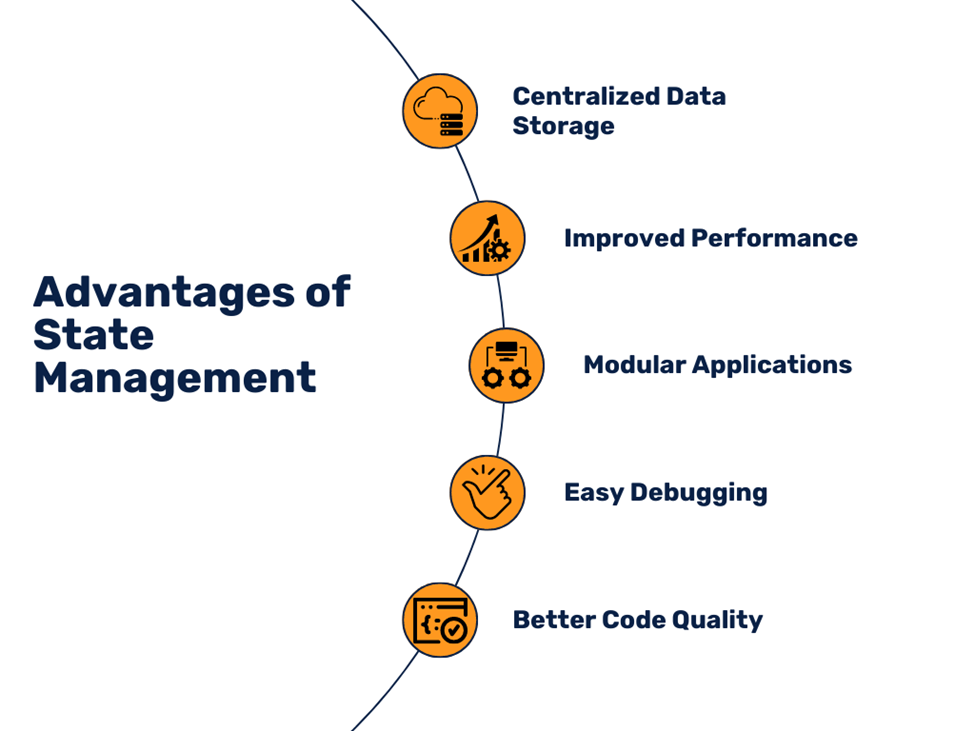Categories
Tags
Archives
State Management In MERN Stack
-
Posted by Pankaj Sharma Filed in Technology #MERN Stack #MERN Stack Course #MERN Stack Training 1K views
Introduction
State management is a critical aspect of developing dynamic web applications, especially in the MERN stack (MongoDB, Express.js, React.js, and Node.js). In React-based applications, managing how data flows between components is essential for ensuring that the user interface remains responsive and consistent. As applications grow in complexity, simple state management through props and the local state becomes insufficient. To address this, developers use more advanced solutions like the Context API or Redux. Effective state management not only improves code maintainability but also ensures smoother communication between the front end and backend, enhancing the overall performance of MERN-based applications. Refer to the MERN Stack Training program to learn more about State management.
What Is MERN Stack?
The MERN stack is a popular web development framework that includes four key technologies: MongoDB, Express.js, React.js, and Node.js. These tools work together to create powerful and dynamic full-stack web applications.
· MongoDB is a NoSQL database that stores data in a flexible, JSON-like format, making it ideal for handling large-scale, unstructured data.
· Express.js is a lightweight web framework for Node.js that simplifies backend development by providing robust APIs and middleware for handling HTTP requests and responses.
· React.js is a front-end JavaScript library used to build user interfaces, primarily for single-page applications (SPAs). It enables developers to create dynamic and responsive web pages.
· Node.js is a runtime environment that allows JavaScript to be executed on the server, making it possible to build scalable network applications.
MERN is commonly used to develop modern web applications where both the front-end and back-end are managed in JavaScript, ensuring seamless communication between the two layers. Its popularity comes from the ease of development, flexibility, and the large community support for all the technologies involved.
All About State Management In MERN Stack

State management in the MERN stack is crucial for handling data across various components and ensuring smooth communication between the front end and backend. In the MERN stack, particularly with React.js as the front-end, state management refers to how data is shared and controlled across components. The MERN Stack Course Syllabus provides detailed guidance on State management in MERN.
Key Concepts of State in Mern Stack
State in React
React components can have internal states that store data relevant to the component's lifecycle, such as user input, fetched data, or UI conditions. React manages the state using hooks like useState, which enables local state handling within functional components. However, managing state within multiple components in larger applications can become challenging.
Prop Drilling
In basic React apps, data is passed from parent components to child components via props. While this approach works for small apps, as the application grows, prop drilling (passing props through multiple layers of components) becomes difficult to maintain.
State Management Solutions
To overcome the limitations of prop drilling and manage state more efficiently in a MERN stack app, developers use state management libraries and tools.
1. Context API
React's built-in Context API helps manage the global state without relying on third-party libraries. It allows state to be shared across multiple components without prop drilling. The useContext hook is used to access the global state and share it across components. Check the MERN Stack Training courses for the best skill development.
Example:
“Copy code
const UserContext = React.createContext();
const App = () => {
const [user, setUser] = useState({name: 'John'});
return (
<UserContext.Provider value={user}>
<Header />
</UserContext.Provider>
);
};”
2. Redux
For larger applications, Redux is commonly used. It provides a centralized store for the application's state, making it easier to manage complex interactions. Redux follows a strict unidirectional data flow using actions, reducers, and the store.
Example flow:
· An action (event) is dispatched (e.g., user login).
· The reducer function updates the state based on the action.
· The updated state is stored in the store and accessed by components.
State Management on Backend
On the backend, Node.js and Express.js handle server-side logic and manage the persistence of state, typically with a database like MongoDB. For example, the app state can be stored in MongoDB and retrieved by React through APIs (using fetch or axios).
Effective state management in the MERN stack ensures smoother, more maintainable applications, especially as complexity grows. Consider checking the MERN Stack Course Syllabus to learn more.
Conclusion
In summary, effective state management is essential for building scalable and maintainable applications in the MERN stack. While React's internal state and props can handle basic needs, larger applications benefit from advanced solutions like the Context API or Redux. These tools help manage the global state, avoid prop drilling, and keep data flow organized. On the backend, Node.js and Express manage server-side state, with MongoDB providing persistent storage. By choosing the right state management approach, developers can create seamless user experiences and ensure smooth interaction between frontend and backend components.